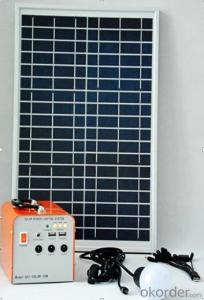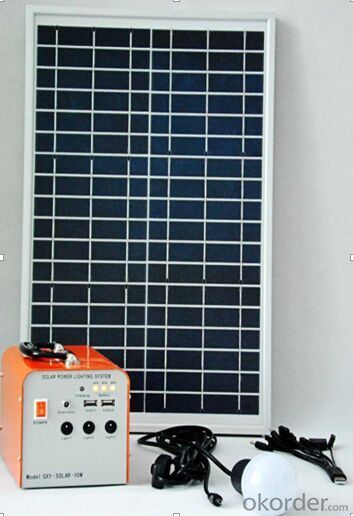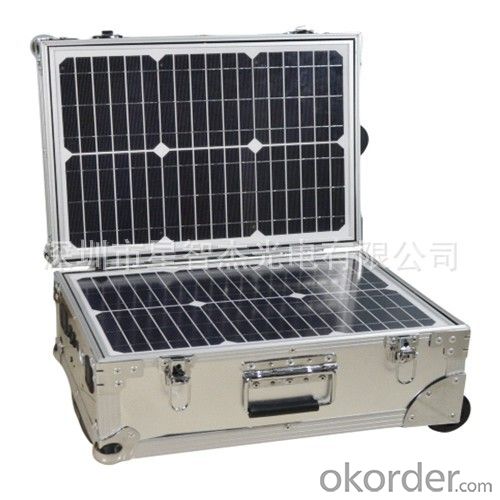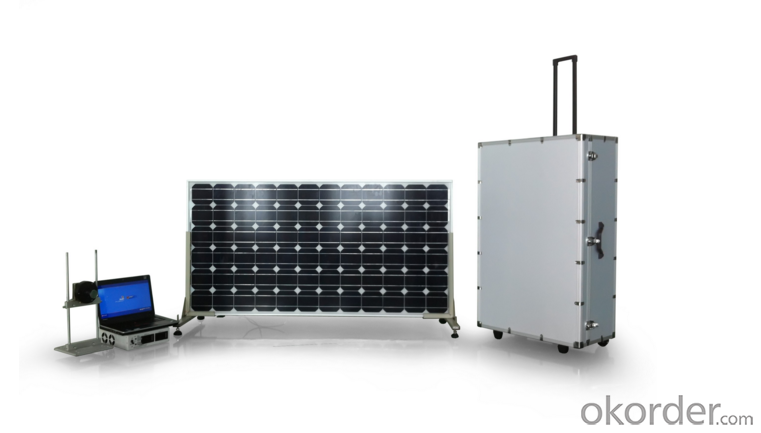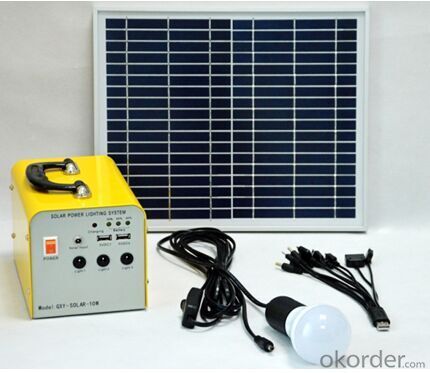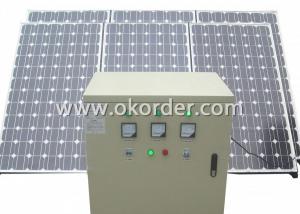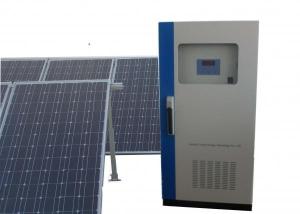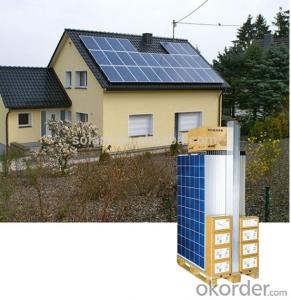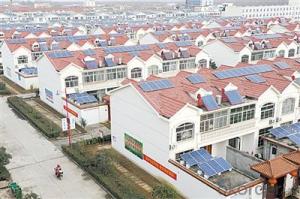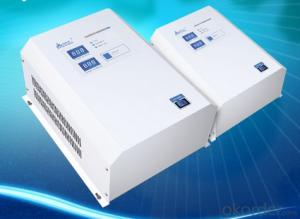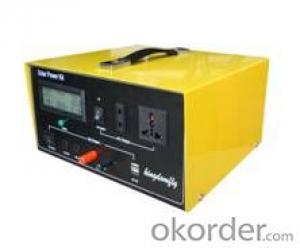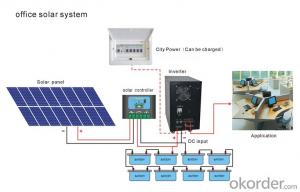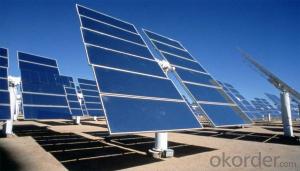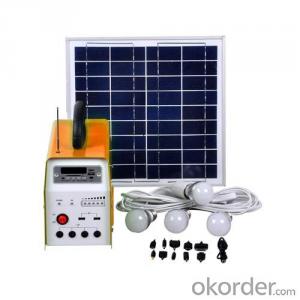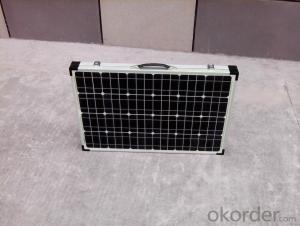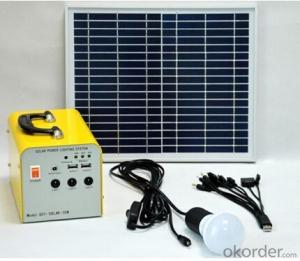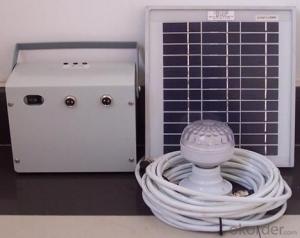Sunlight Solar Energy Systems - Solar Portable System AN-S10W
- Loading Port:
- Shanghai
- Payment Terms:
- TT OR LC
- Min Order Qty:
- 0 set
- Supply Capability:
- 10000 set/month
OKorder Service Pledge
OKorder Financial Service
You Might Also Like
Specification
Description of Solar Portable System AN-S10W
Compatible portable solar power supply, also called solar mobile power, it includes: solar panel, charge controller, discharge controller, electric charge controller, inverter, outside enlarge capacity interface and battery, etc. Photovoltaic portable power supply can work in solar energy and ordinary power two modes, and can automatically switch. Photovoltaic portable power supply is used widely is the emergency relief, tourism, army, geological prospecting, archaeology, schools, hospitals, Banks, gas stations, comprehensive building, highway, substation, family camping or outdoor activities such as emergency power ideal power supply equipment.
Specifications of Solar Portable System AN-S10W
1. Solar Panel: 10W 18V
2. Battery: 12V5A lead-acid battery
Input terminal: 1 DC input, 9V
Output terminal: 4 output terminals, including:
1x USB output, 5V 1A;
3x DC outputs, 6V 1A
Switch: one square On/Off general switch
Indication lamp: 2 pcs; Red one is for charging indication, Green one is for operating indication.
Accessories of Solar Portable System AN-S10W
1. 2pcs 3W led bulbs;
2. 1pc 3m connection wire between solar panel and cabinet;
3. 2pcs lamp holder with 3m wire;
4. 1pc AC charger
Technical Data of Solar Portable System AN-S10W
| Internal Package Size (cm) | 26*16.5*21 |
| Packing QTY | 4 |
| External Package Size (cm) | 30*47*43.5 |
IMages of Solar Portable System AN-S10W
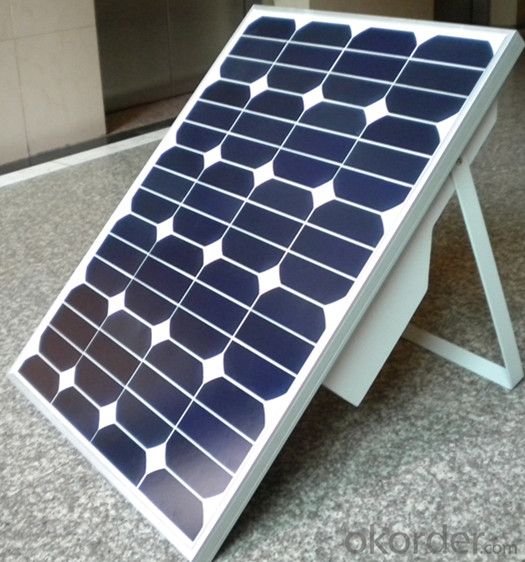
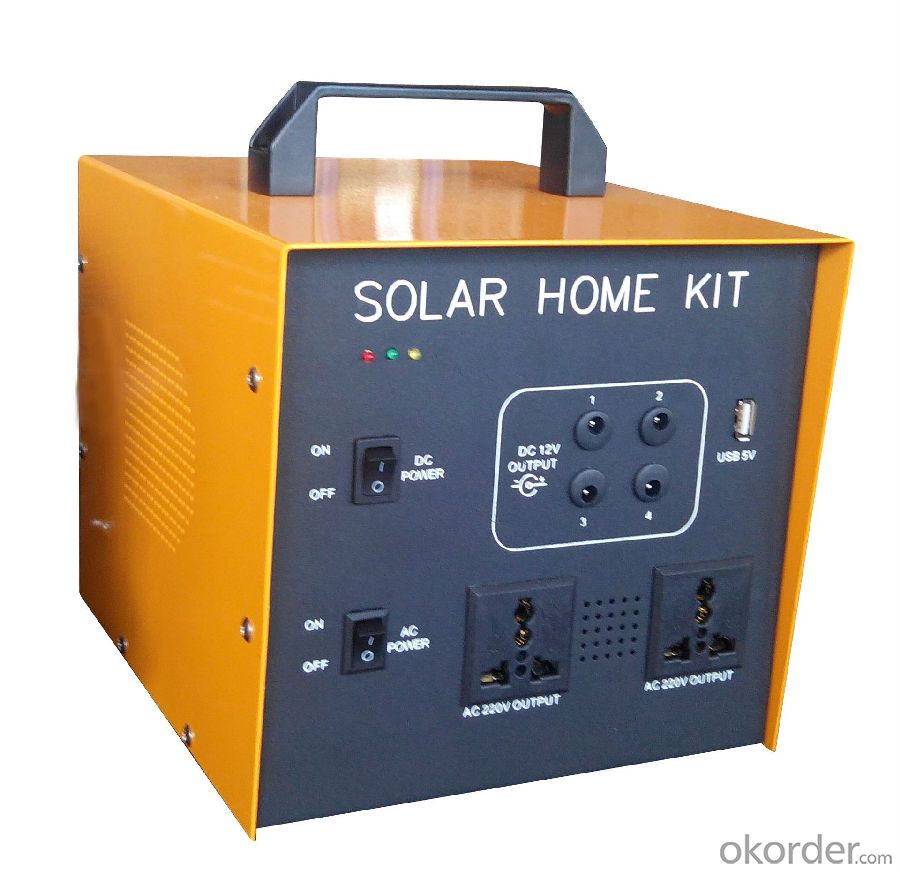
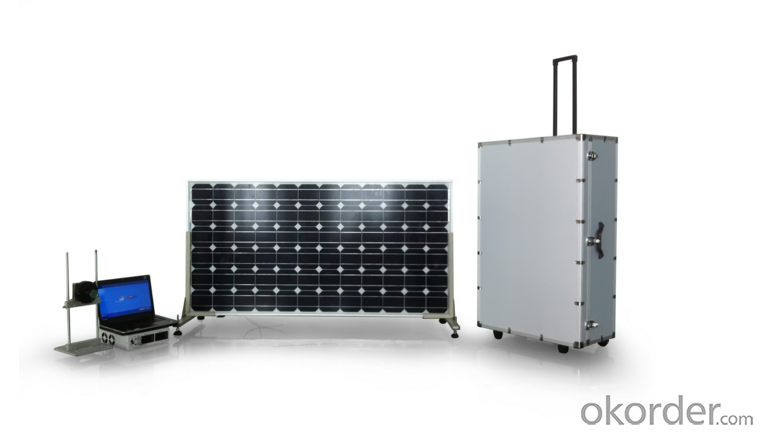
FAQ:
1. How long will my inquiry get response?
Your inquiry related to our products or prices will be replied within 24 hours.
2. Can I get professional service and suggestion?
Well-trained and experienced staffs to answer all your questions in fluent English.
3. Do you accept OEM or customized design?
OEM & ODM, any your customized lightings we can help you to design and put into product.
4. What if I need specific design?
Distributorship are offered for your unique design and some our current models.
- Q: Can solar energy systems be used in powering research laboratories or scientific facilities?
- Certainly, research laboratories and scientific facilities can utilize solar energy systems to provide power. Solar energy is a sustainable and renewable power source that can be harnessed through the utilization of photovoltaic (PV) panels or solar thermal systems. To power various equipment such as microscopes, spectrometers, centrifuges, and other specialized scientific instruments, research laboratories and scientific facilities often require a substantial amount of electricity. By installing solar panels on the roofs or surrounding areas of these facilities, they can generate electricity from sunlight. The electricity generated by solar panels can directly power the laboratory's equipment, reducing their dependence on traditional fossil fuel-based electricity sources. Furthermore, any excess energy produced by the solar panels can be stored in batteries or returned to the grid, ensuring a continuous and reliable power supply. Using solar energy in research laboratories and scientific facilities offers several advantages. Firstly, it helps diminish greenhouse gas emissions and mitigates the environmental impact of these facilities. Solar power is clean and does not generate harmful pollutants, making it an environmentally friendly substitute for conventional electricity sources. Additionally, solar energy systems can provide a stable and cost-effective power source in the long term. While the initial installation costs may be higher, solar panels have a lengthy lifespan and require minimal upkeep. This can result in significant savings on electricity bills over time, enabling research laboratories and scientific facilities to allocate their resources towards other essential research activities. Moreover, solar energy systems can enhance the resilience and reliability of power supply to these facilities. In regions prone to power outages or with unreliable electricity grids, solar panels combined with battery storage can serve as a backup power source, guaranteeing uninterrupted operation of critical scientific equipment. In conclusion, solar energy systems can indeed be utilized to power research laboratories and scientific facilities. They offer numerous environmental, economic, and operational advantages, making them a feasible and sustainable choice for meeting the energy requirements of these vital scientific institutions.
- Q: Can solar energy systems be used for powering data centers or server farms?
- Yes, solar energy systems can be used to power data centers or server farms. Solar panels can be installed on the roofs or in open areas surrounding the facilities to capture sunlight and convert it into electricity. This renewable energy source can help reduce the carbon footprint of these energy-intensive operations and lower their reliance on traditional grid electricity. However, the actual feasibility and capacity of solar energy systems for powering data centers or server farms depend on factors such as the location, size of the facility, and energy demands.
- Q: How often do solar panels need to be cleaned?
- Solar panels generally need to be cleaned at least once or twice a year to ensure optimal performance. However, the frequency of cleaning can vary depending on factors such as the local climate, amount of dust or debris accumulation, and the tilt angle of the panels. Regular inspections and maintenance can help determine the specific cleaning needs of solar panels.
- Q: What is the impact of snow cover on the performance of solar panels?
- The impact of snow cover on the performance of solar panels is generally negative. Snow covering the surface of solar panels reduces the amount of sunlight that can reach the photovoltaic cells, leading to a decrease in electricity generation. It also hampers the self-cleaning mechanism of the panels, which relies on rainwater to wash away dirt and debris, further reducing their efficiency. However, advancements in solar panel technology, such as anti-reflective coatings and tilted mounting systems, have been developed to mitigate the effects of snow cover and improve performance during winter months.
- Q: Can solar energy systems be used in powering agricultural processing facilities?
- Solar energy systems have the capability to power agricultural processing facilities. Photovoltaic (PV) panels, for instance, are able to generate electricity by harnessing sunlight. This generated electricity can then be utilized to operate various electrical equipment and processes within agricultural processing facilities. This includes the ability to power machinery used for cleaning, sorting, and packaging agricultural products, as well as running heating, ventilation, and air conditioning systems. To ensure a consistent and uninterrupted power supply, solar energy systems can also be combined with battery storage solutions. This integration allows for a reliable power supply, even during periods of limited sunlight or during nighttime. Furthermore, employing solar energy to power agricultural processing facilities helps decrease dependence on fossil fuels, reduces greenhouse gas emissions, and contributes to a more sustainable and environmentally friendly operation.
- Q: How much does a solar energy system cost?
- The cost of a solar energy system can vary depending on various factors such as the size of the system, the location, and any additional equipment or services required. On average, a residential solar energy system can range from $10,000 to $30,000, but it is recommended to consult with a solar installer to get a more accurate cost estimate based on specific requirements.
- Q: Can solar energy systems be installed in areas with extreme weather conditions?
- Yes, solar energy systems can be installed in areas with extreme weather conditions. While extreme weather conditions such as extreme heat, cold, wind, or snow can potentially affect the performance of solar energy systems, modern solar technology has been designed to withstand these conditions. Solar panels are made from durable materials that can handle high temperatures, freezing temperatures, and strong winds. Additionally, solar panels are often tested and certified to meet specific industry standards for durability and performance in different weather conditions. In areas with extreme heat, solar panels are designed to dissipate heat and maintain their efficiency. They are also tested to ensure that they can withstand the high temperatures without any damage or significant loss in performance. In areas with extreme cold, solar panels are built to withstand freezing temperatures and can even generate electricity in snowy conditions. Some solar panels are designed with anti-reflective coatings to absorb more sunlight and melt snow faster. Furthermore, solar energy systems are often installed with proper mounting systems and structures that can withstand strong winds or storms. These systems are engineered to ensure that the solar panels remain securely attached to roofs or ground mounts even in areas prone to hurricanes or high winds. While extreme weather conditions can impact the performance of solar energy systems to some extent, with proper installation and design, solar panels can still generate electricity and provide a reliable source of renewable energy in areas with extreme weather conditions. It is important to consult with experienced solar installers or engineers who can assess the specific weather conditions of an area and design a solar energy system that can withstand those conditions.
- Q: Can solar panels be integrated into building materials like windows or roofing tiles?
- Yes, solar panels can be integrated into building materials like windows or roofing tiles. These integrated solar panels, also known as building-integrated photovoltaics (BIPV), allow for the generation of electricity while being seamlessly incorporated into the design of the building. This integration not only reduces the need for separate solar panels but also enhances the aesthetics and functionality of the building by harnessing solar energy.
- Q: Can solar energy systems be used in powering amusement parks?
- Yes, solar energy systems can be used to power amusement parks. Solar panels can be installed on the roofs of buildings, parking structures, or in open spaces within the park to generate electricity from the sun. This renewable energy source can help reduce the park's reliance on traditional grid power, lower operating costs, and decrease its carbon footprint. Additionally, solar energy systems can provide a reliable and consistent source of power, making them suitable for meeting the electrical demands of amusement parks.
- Q: How do solar energy systems affect the electrical wiring of a building?
- Solar energy systems can have an impact on the electrical wiring of a building. When solar panels are installed, they need to be connected to the existing electrical system. This typically involves adding a new electrical panel or inverter to convert the DC power from the solar panels to AC power that can be used in the building. Additionally, solar energy systems may require the installation of new wiring to connect the panels to the electrical panel. However, with proper installation and integration, solar energy systems should not negatively affect the electrical wiring of a building.
Send your message to us
Sunlight Solar Energy Systems - Solar Portable System AN-S10W
- Loading Port:
- Shanghai
- Payment Terms:
- TT OR LC
- Min Order Qty:
- 0 set
- Supply Capability:
- 10000 set/month
OKorder Service Pledge
OKorder Financial Service
Similar products
Hot products
Hot Searches
Related keywords
